How to Choose a Suit, Ultimate Buying Guide
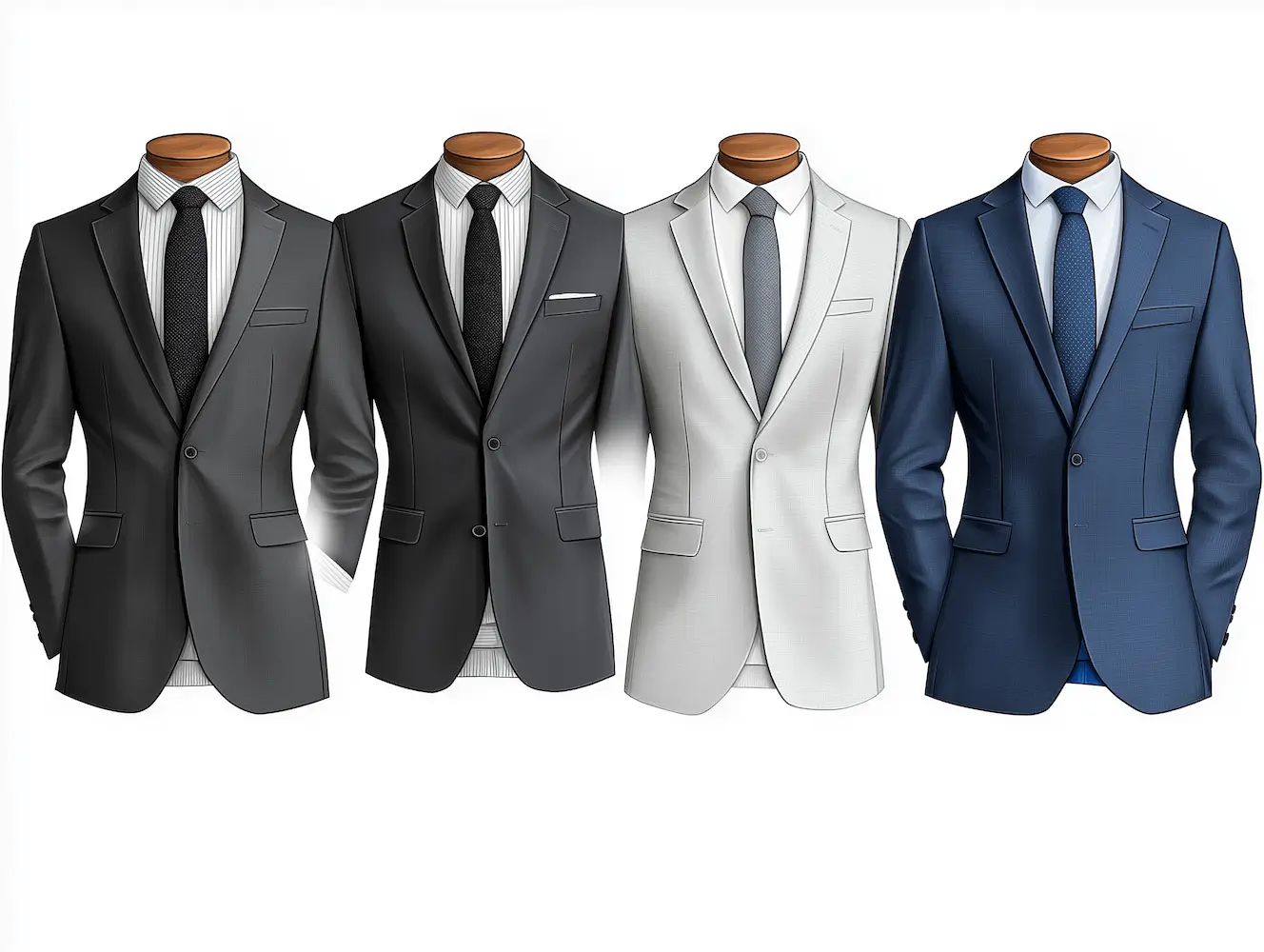
Choosing the perfect suit can feel overwhelming, but it doesn’t have to be. From selecting the right fit to deciding on materials, colors, and even small details like lapels and pockets, every choice shapes your look and comfort. This guide simplifies the process, giving you everything you need to know to find a suit that fits your style, occasion, and budget.
Here’s what you’ll learn:
- Suit Fits: Understand the differences between skinny, slim, classic, and relaxed fits to pick what suits your body type.
- Materials: Discover the best materials for each season and how they impact comfort and style.
- Colors and Patterns: Learn how to choose suit colors that match the event and season, from formal black to vibrant burgundy.
- Suit Parts: Get familiar with key suit features like lapels, buttons, pockets, and vents to customize your look.
- Sizes: Find your perfect size with easy measurement tips, including how to use your jeans size as a guide.
- Prices: Explore affordable options and understand what makes a suit worth its price.
Suit Fits
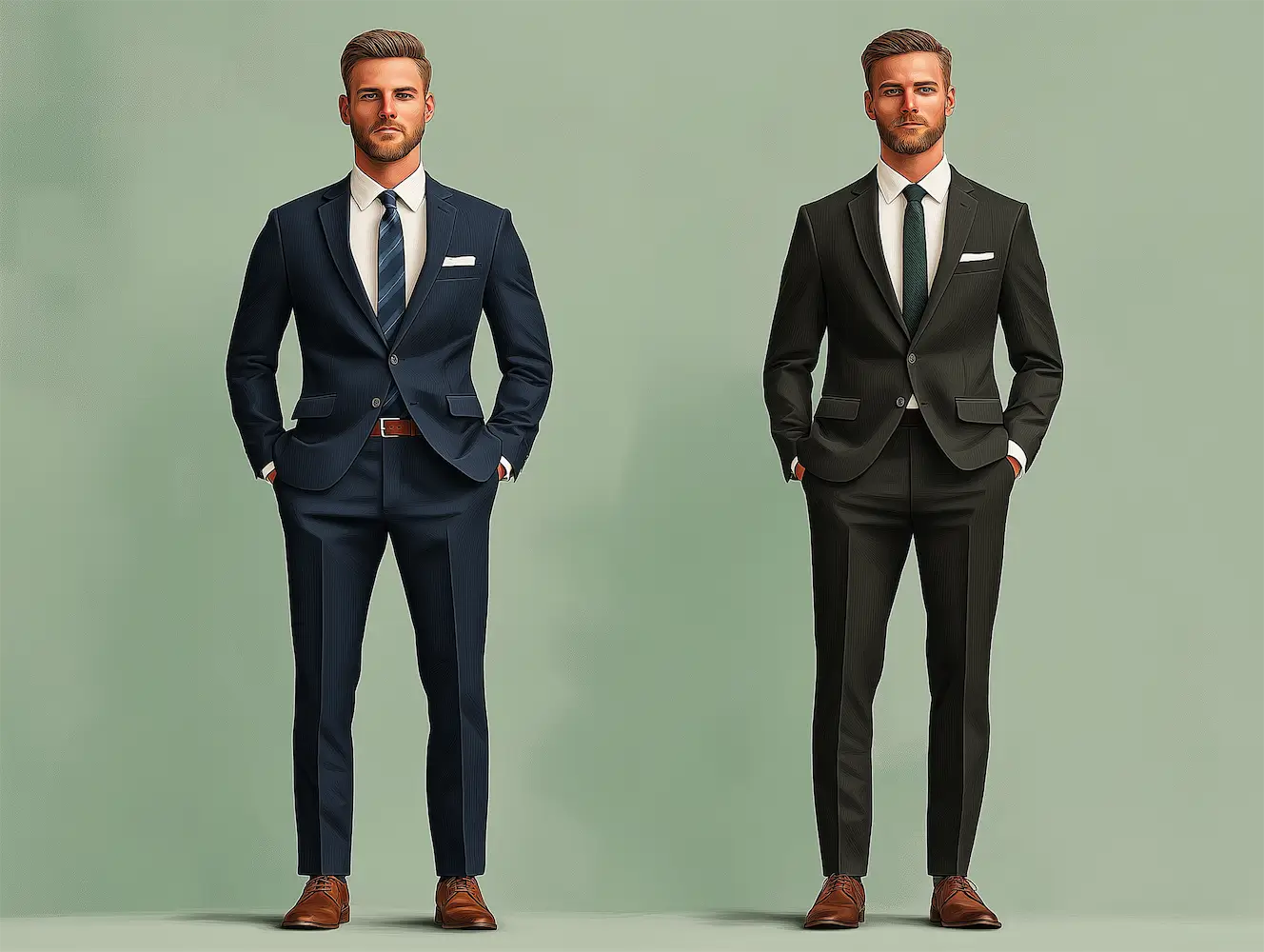
First, you need to choose the fit of your suit. Like other clothes, they have their own fit sizes. Here are the 4 types of fits you can find below.
Skinny Fit:
A skinny-fit suit fits very close to the body. It has narrow shoulders, slim sleeves, and very tight pants. It’s best for people who are thin or lean. If someone is not very bulky, a skinny fit will match their shape nicely without feeling too tight.
Slim Fit:
A slim-fit suit is tighter around the chest. The armholes are a bit higher, and the pants fit closer to the legs. This fit is good for people who have an average or slim body shape. It gives a tidy look.
Classic Fit:
A classic fit suit is looser around the chest and shoulders, with wider pants. This fit works well for all body types and gives more size choices.
Relaxed Fit:
A relaxed fit, also called "modern classic fit" or "full cut," is even looser than a classic fit. It has more room around the chest, shoulders, and legs, so it feels very comfortable and spacious. This fit is good for people who like to move easily and want a more casual look.
Materials
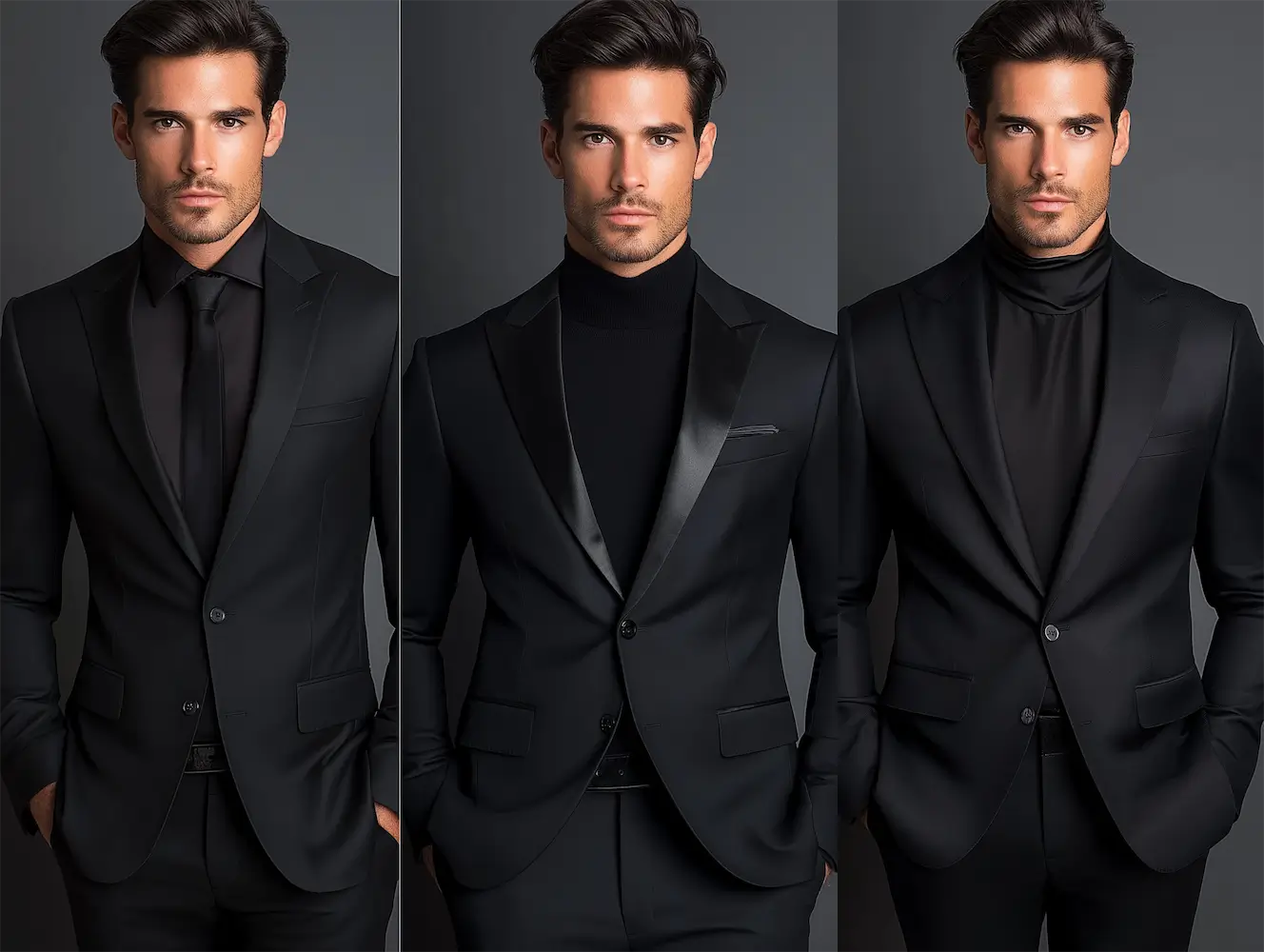
After choosing the fit, the next step is picking the right material. Weather matters most because different materials can keep you warm or cool.
- Going to a winter gala? Velvet, cashmere, and wool are great options to stay warm.
- Going to a summer wedding? If you’re the groom, your wedding suit can be polyester and viscose blend.
- If you need a suit for all seasons, try a 65% polyester and 35% viscose blend. With a coat, it keeps you warm, and without it, you can stay cooler.
In short, for each season, linen and cotton suits work best for summer, light wool for spring, mid-weight wool or polyester blend for fall, and wool, velvet, or cashmere for winter, with a 65% polyester and 35% viscose blend as a versatile option for any season.
Suit Parts to Know
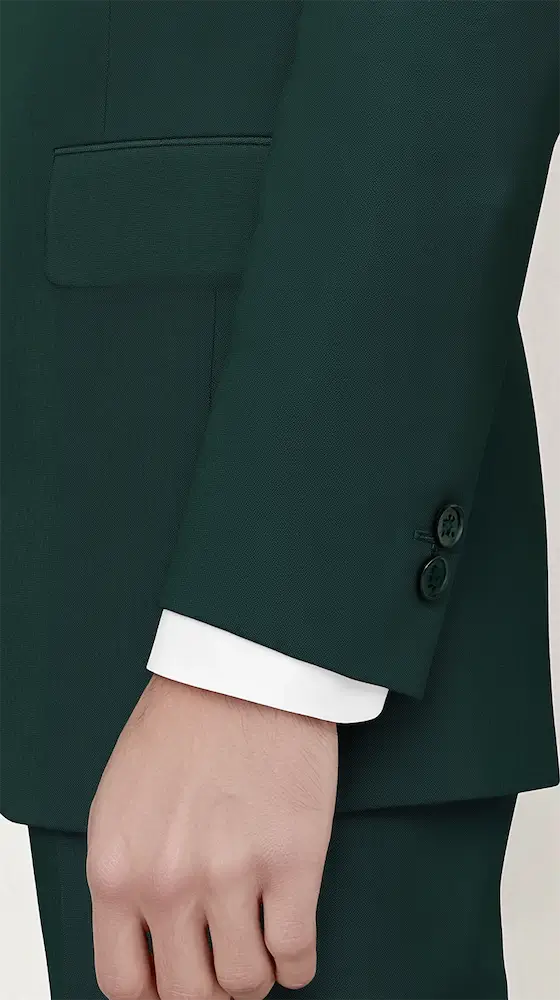
Suits consist of many parts, and these parts play a big role in defining the style, comfort, and overall look of the suit. Each detail from lapels to pockets adds its character, helping you find a style that fits your taste and the occasion. Understanding these parts can make it easier to choose the perfect suit.
Button Closure Types
Suit jacket buttons are a key part of its style and fit. It helps how formal it appears.
- Single-Breasted: One row of buttons down the front. Commonly worn with only the top button fastened.
- Double-Breasted: Has two rows of buttons, with one side overlapping the other. This style is bold and formal.
Lapel Types
The lapel is the folded part of fabric on the front of the jacket, framing the shirt collar. It can tell how formal a suit is.
- Notch Lapel: Features a small notch cut out where the collar and lapel meet; it is the most common lapel type.
- Shawl Lapel: Has a smooth, rounded edge without any cut. It’s mostly seen on formal suits and tuxedos.
- Peak Lapel: With the lower edge of the lapel pointing up toward the shoulders. It is the most formal option.
Overall Shape Types (Silhouette)
The silhouette is the overall shape and structure of the suit jacket, affects how fitted or loose it looks.
- Natural (Soft) Shape: Made with a softer inner lining and light padding, giving it a relaxed, American style.
- Structured Shape: Has a firmer inner layer and padded shoulders, giving the jacket a stronger, more defined shape, typical of British and mostly European styles.
Shoulder Types
Shoulders play a big role in shaping the jacket. It can make the jacket look softer or more structured.
- Soft Shoulder: Low, unpadded shoulders for a relaxed and natural look.
- Rope Shoulder: Has a raised seam.
- Natural Shoulder: Almost flat, with only a slight ridge, offering a balanced shape.
Back Vent Types
Vents are the slits at the back of the jacket, allowing for more movement and comfort. They affect both style and function.
- Side Vents: Two slits on either side of the back, often preferred for relaxed movement.
- Center Vent: One slit in the center back, offering a classic look.
- No Vent: Rare, with no slits, giving the back a smooth, uninterrupted appearance.
Jacket Cuff Types
Cuff length is essential for a best look, and it’s common to adjust this length for the perfect fit.
Proper sleeve length should show about half an inch of shirt cuff below the jacket sleeve. This may need tailoring for a precise fit.
Trouser Break Types
The break refers to how the trousers meet the shoes, creating different creases or no crease at all. This choice impacts the formality of the suit.
- Full Break: Hem reaches the top of the shoe heel, creating a full crease in the fabric.
- No Break: Hem just skims the shoe, creating a modern look, typically with slim-leg trousers.
- Half Break: Creates a smaller crease and is the most versatile option, working with most trousers.
Trouser Cuff Types
Trouser cuffs refer to whether the bottom hem of the trousers is folded or left plain.
- Plain (Uncuffed): A clean, uncuffed hem, suitable for a simpler look.
- Cuffed: A fixed cuff, adding weight and shape to the trouser hem. Great for pleated trousers or heavier fabrics but not used on tuxedos.
Pocket Types
Suit pockets can vary in style, affecting its look and function. Here’s a breakdown of common pocket types:
- Flap Pockets: Standard pockets with a fabric flap covering the opening; common on most suits and offer a balanced look.
- Jetted Pockets: Slit-like pockets without flaps, lying flat against the jacket, often seen on tuxedos and more formal suits.
- Patch Pockets: Pockets sewn onto the outside of the jacket, giving a more casual, relaxed appearance.
Chest Pocket
The chest pocket sits on the left side of the jacket and is traditionally used to hold a pocket square.
Welted Chest Pocket: Standard slit pocket that sits close to the jacket for a sleek look.
Suit Lining Types
The lining is the inner fabric layer of the suit jacket and sometimes the trousers, adding comfort, durability, and sometimes style.
- Fully Lined: Covers the entire interior, giving structure and warmth.
- Half-Lined: Covers only the upper back and shoulders, making the jacket lighter and more breathable.
- Unlined: No lining, offering maximum breathability and flexibility, often seen in summer suits.
Lapel Width Types
Lapel width can subtly influence the style and look of the suit. Narrower lapels tend to look more modern, while wider lapels give a vintage or classic look.
- Narrow Lapel: Slim and sharp, often associated with a modern look.
- Wide Lapel: Broader and often considered more traditional, adding presence and a touch of classic style.
Pant Pleats
Pleats are folds of fabric at the waistband, adding room and ease to the trousers. They affect both comfort and style.
- Flat Front: No pleats, giving a smooth, modern look.
- Single Pleat: One pleat, adding a bit of extra room in the thigh area for comfort.
- Double Pleat: Two pleats, offering more space and ease, usually seen in classic or relaxed-fit trousers.
Waist Tabs
Some trousers come with waist tabs—small adjusters on the waistband—offering a clean look without needing a belt.
- Side Adjusters: Little tabs that can be adjusted to tighten or loosen the waist, providing a sleek, belt-free look.
Button Styles
The type and style of buttons can add personality to the suit.
- Standard Buttons: Typically plastic or resin, matching the color of the suit.
- Metal Buttons: Often found on blazers, adding a more formal or distinctive look.
- Horn Buttons: Made from natural horn, adding a luxurious, classic touch.
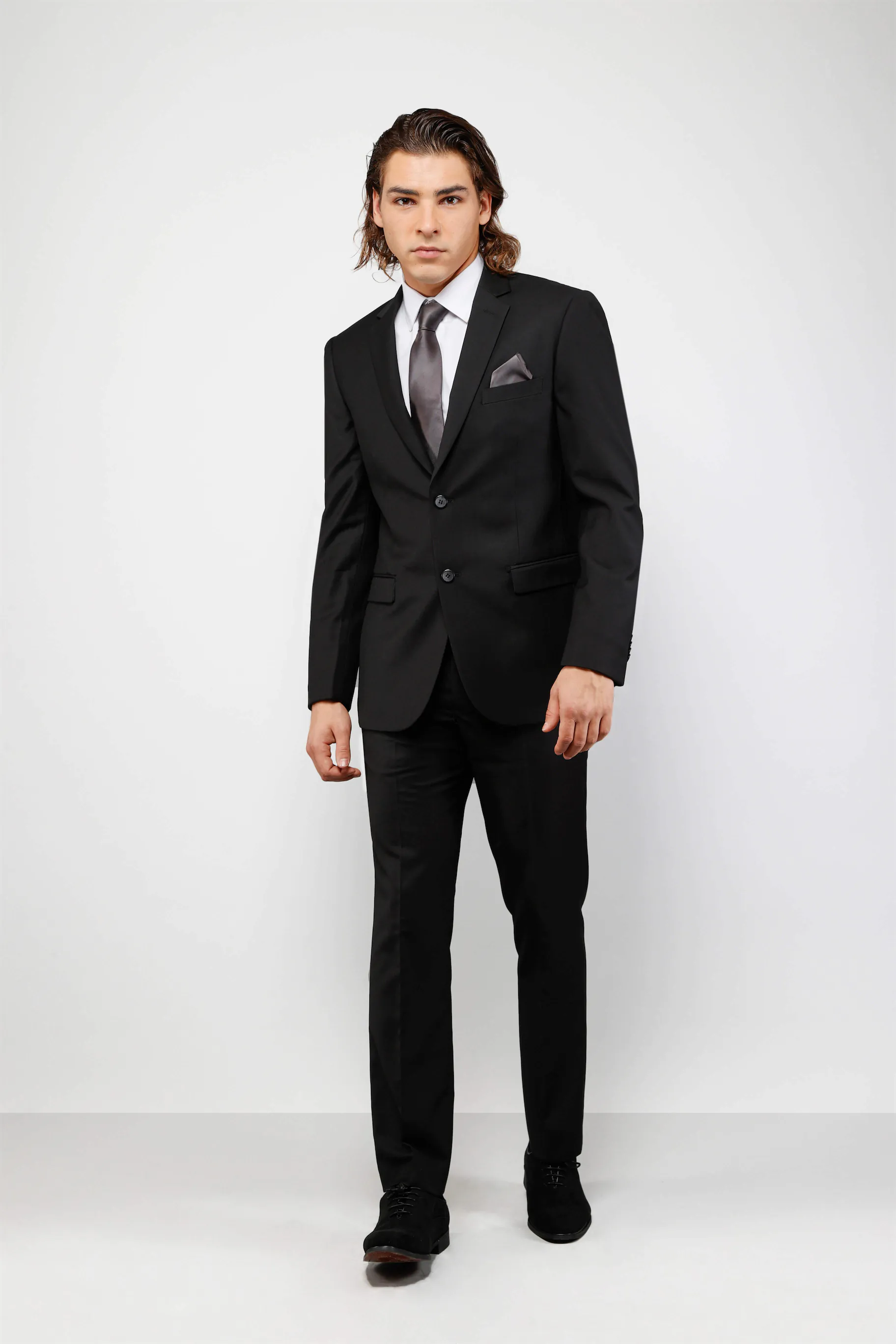
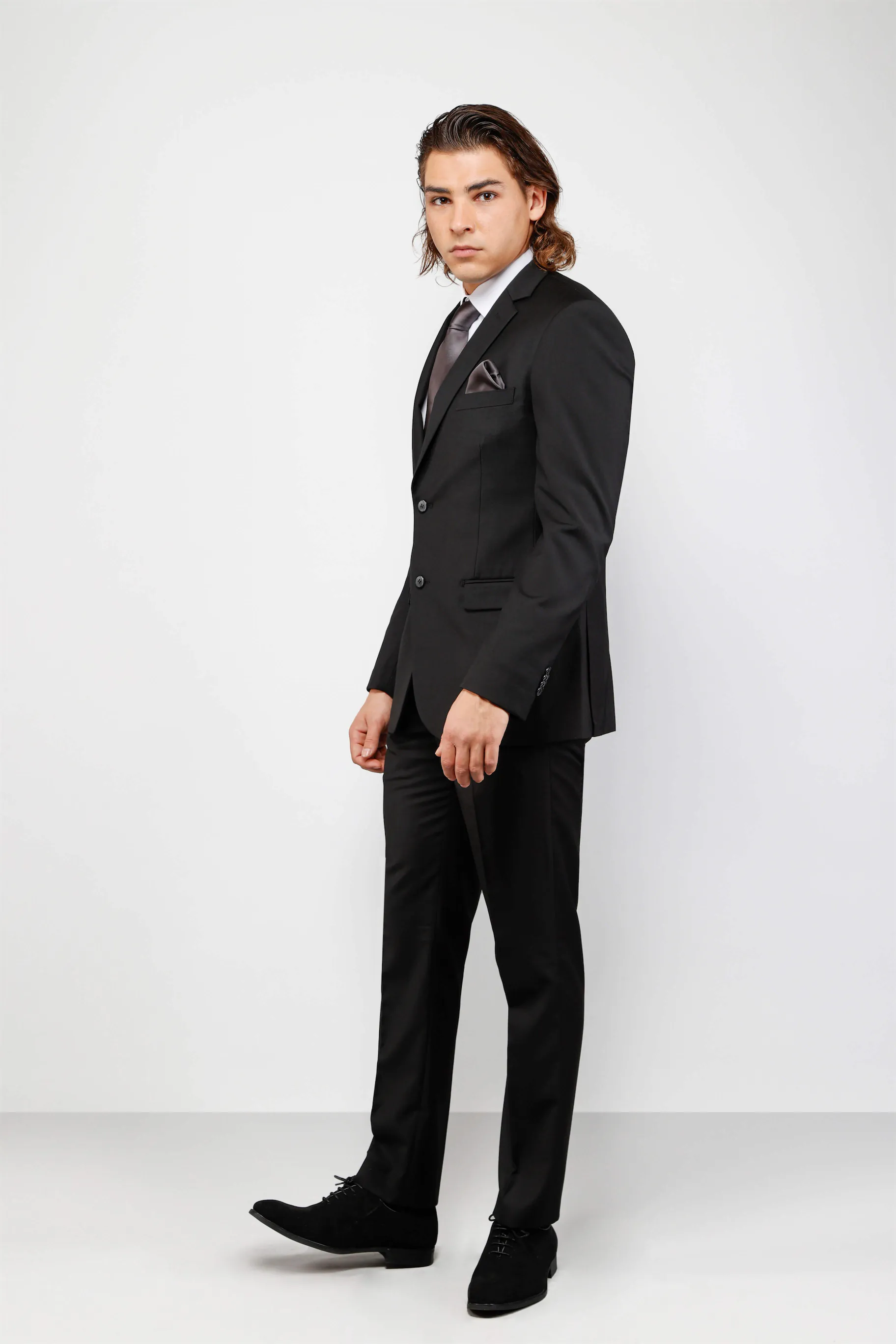
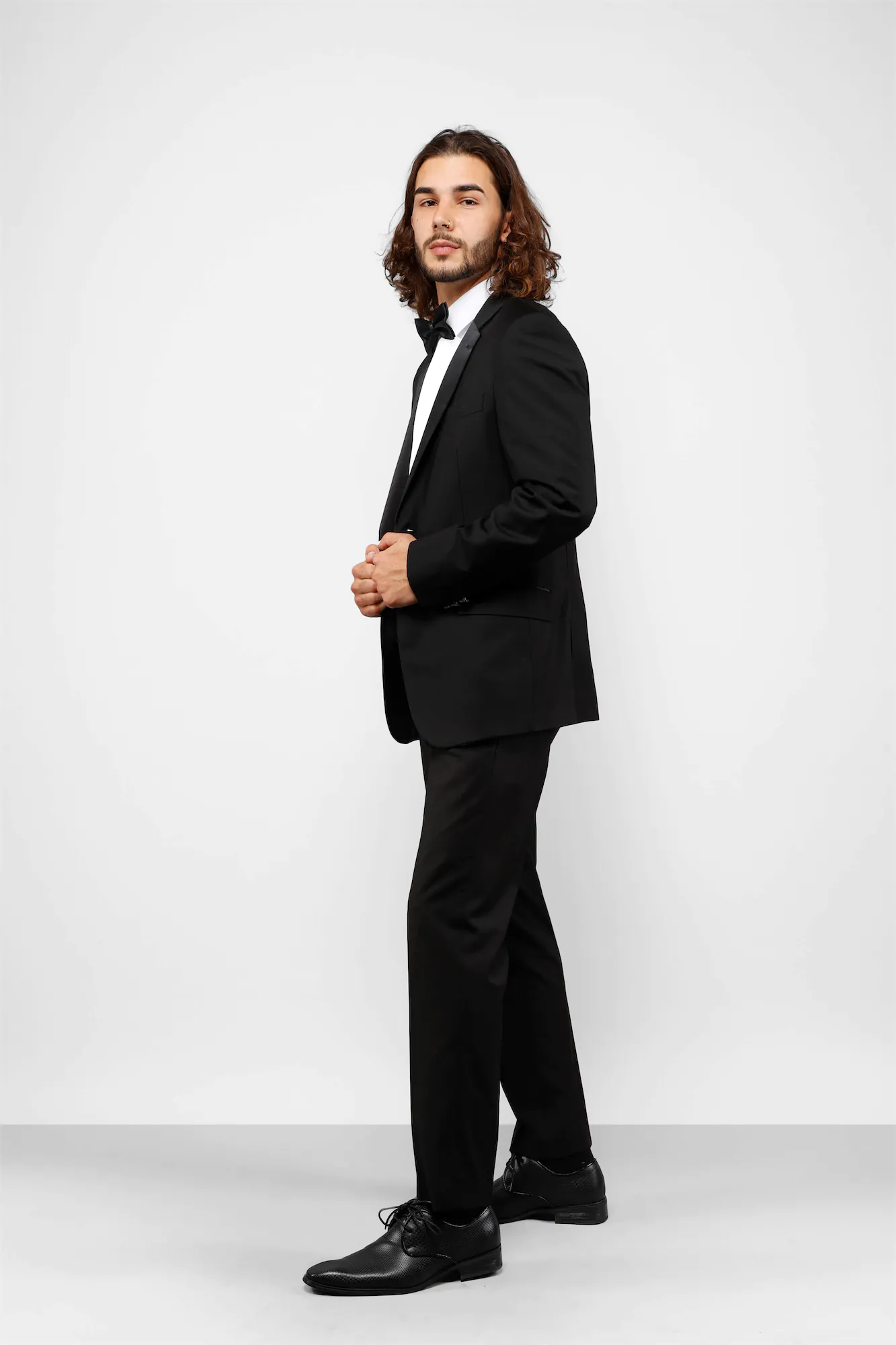
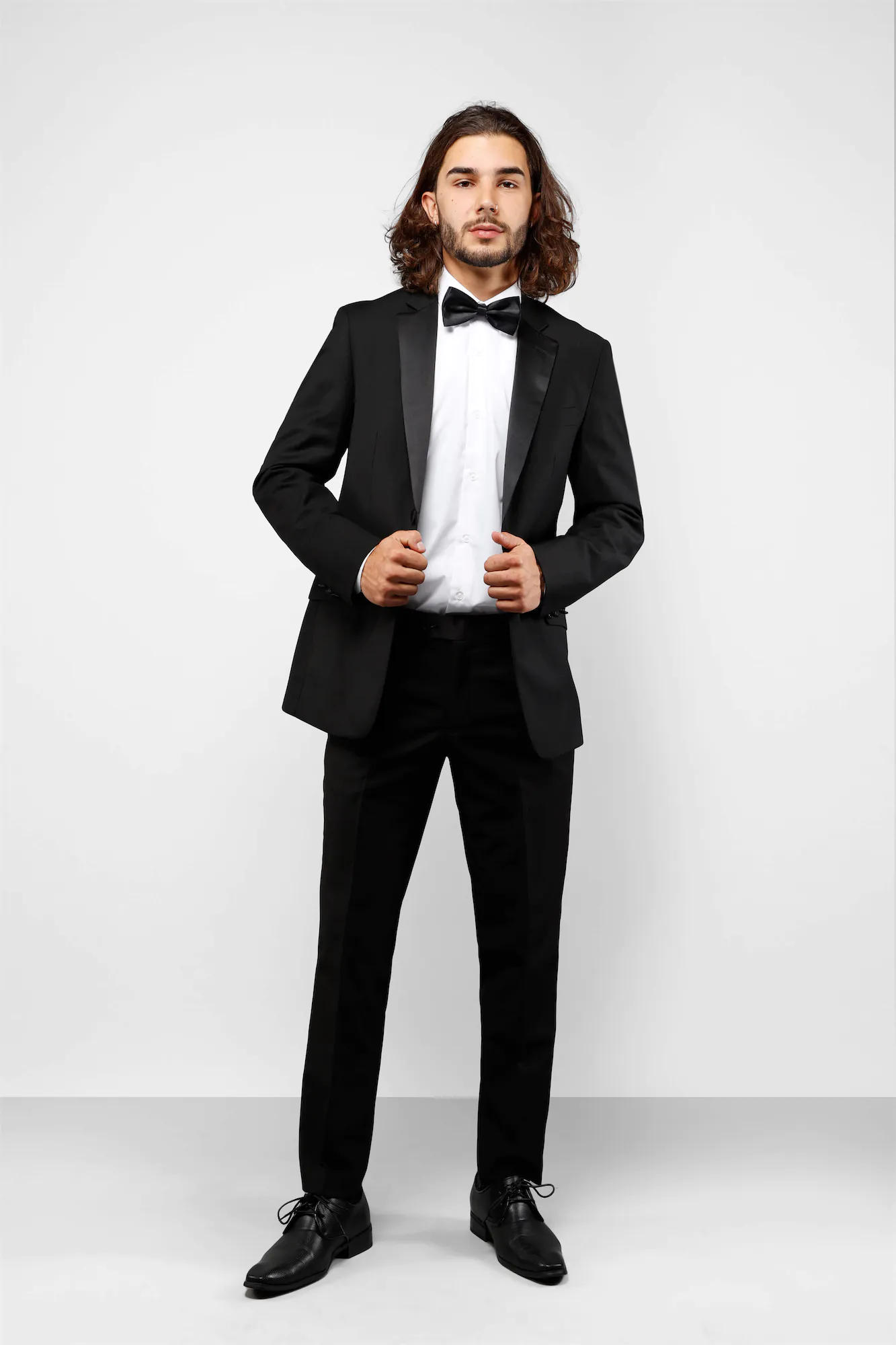
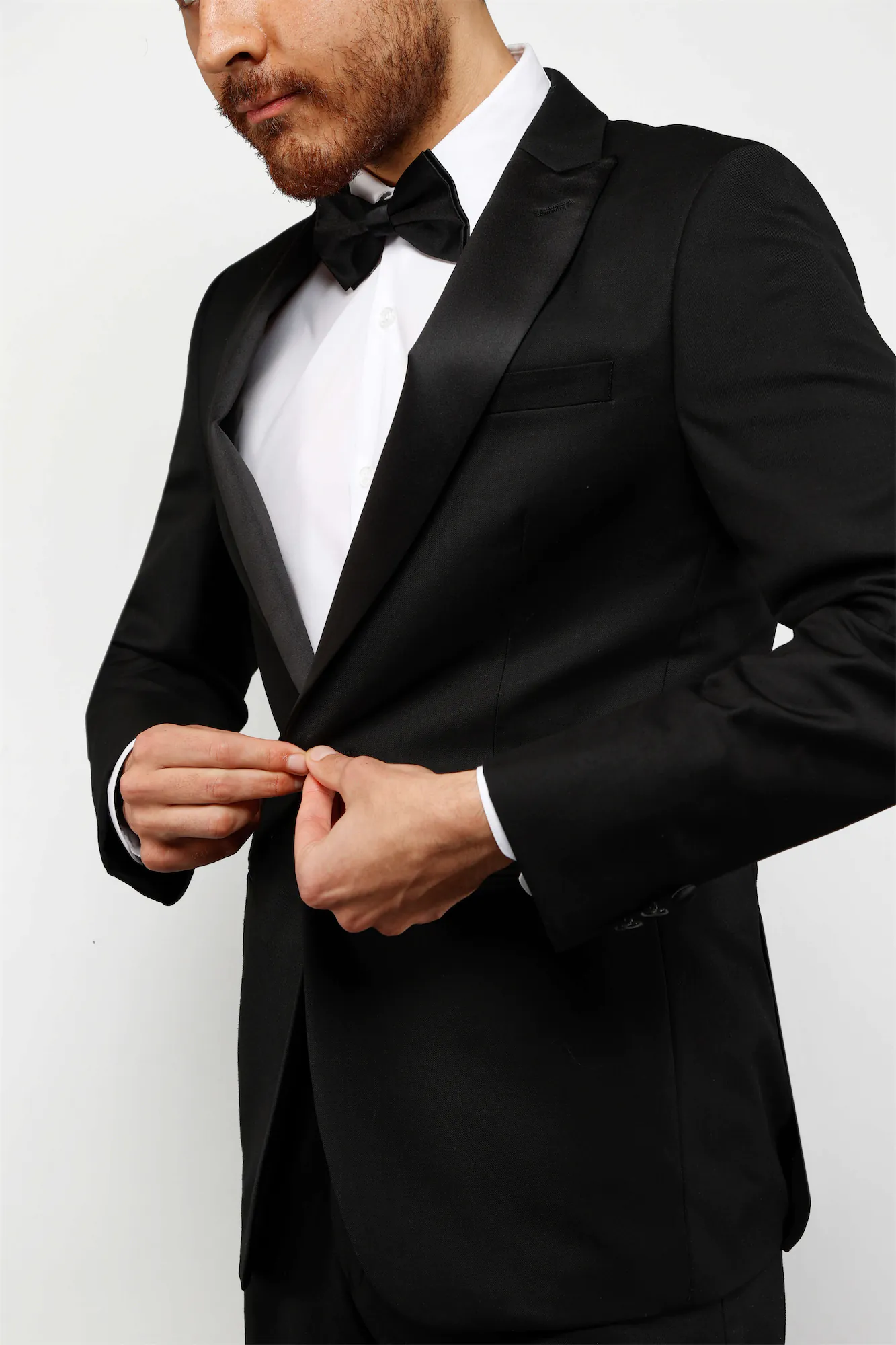
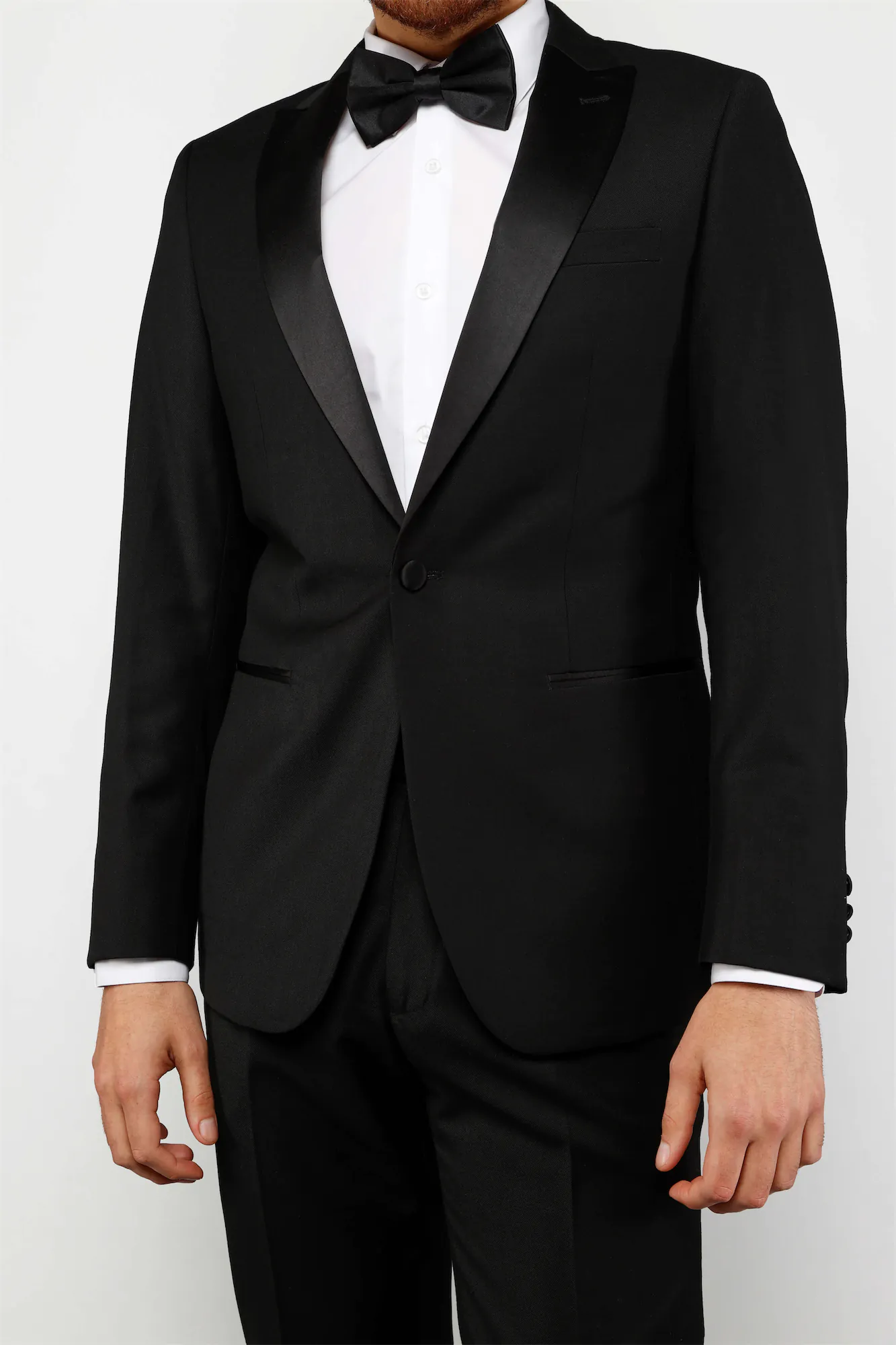
Colors - Patterns
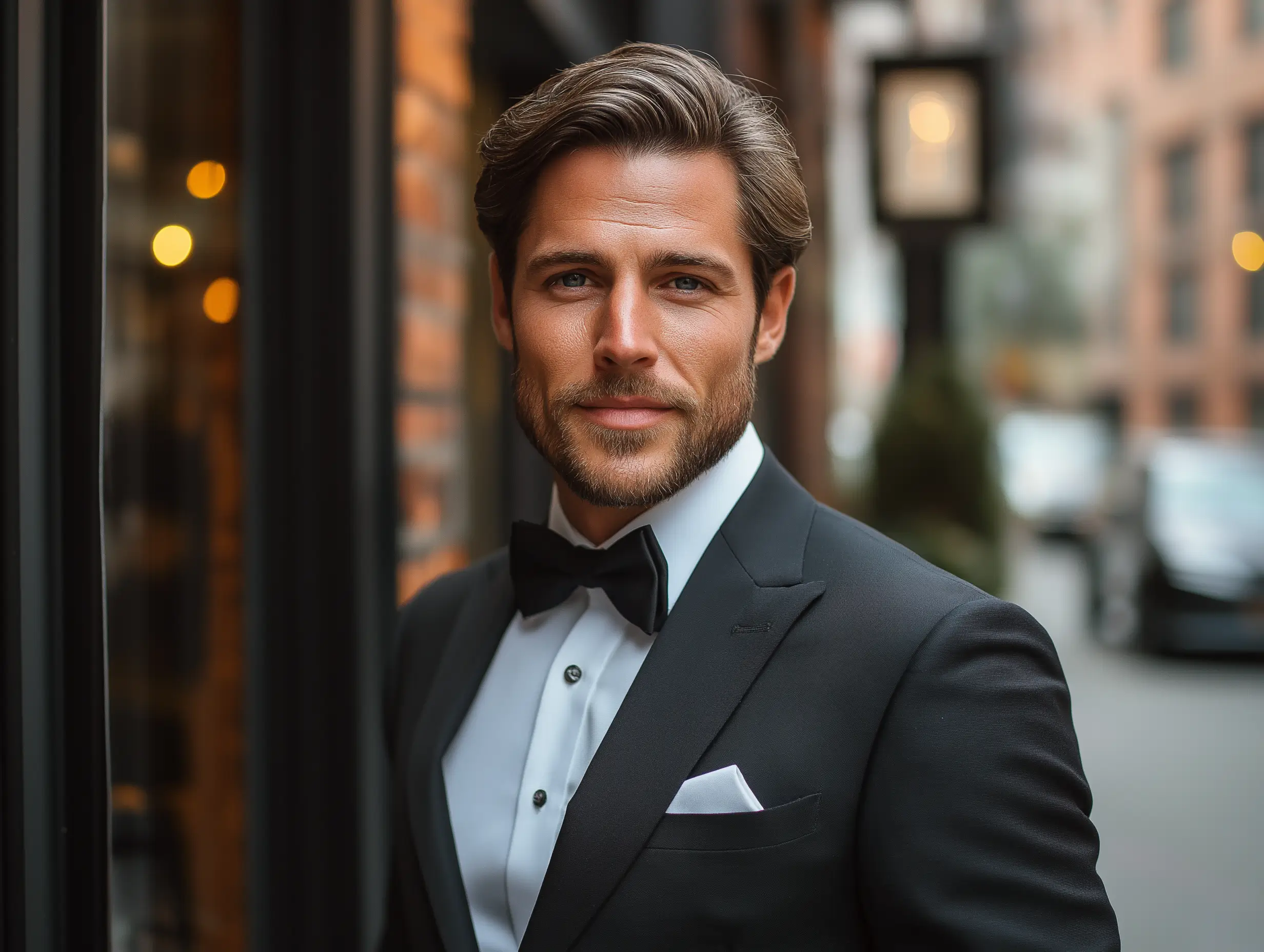
Choose solid colors for formal events and classic looks. Opt for patterns like fine lines or checks for a more relaxed style. Darker colors, like navy and black suits, are versatile, while lighter shades, like gray or beige, suit casual or daytime events.
For a winter gala, choose burgundy or red suits, while summer weddings call for light blue or beige for guests, and black or blue tones for a groom's formal look.
If you are asking how to choose the color, consider the event and season. Dark tones work for evening or formal events, while lighter tones suit daytime or summer occasions. Neutral colors like navy or gray are safe for most settings. For autumn wedding suits , warm tones like brown, burgundy, or olive green are excellent choices. For weddings or parties, brighter colors like blue or burgundy can stand out.
Sizes Measurement
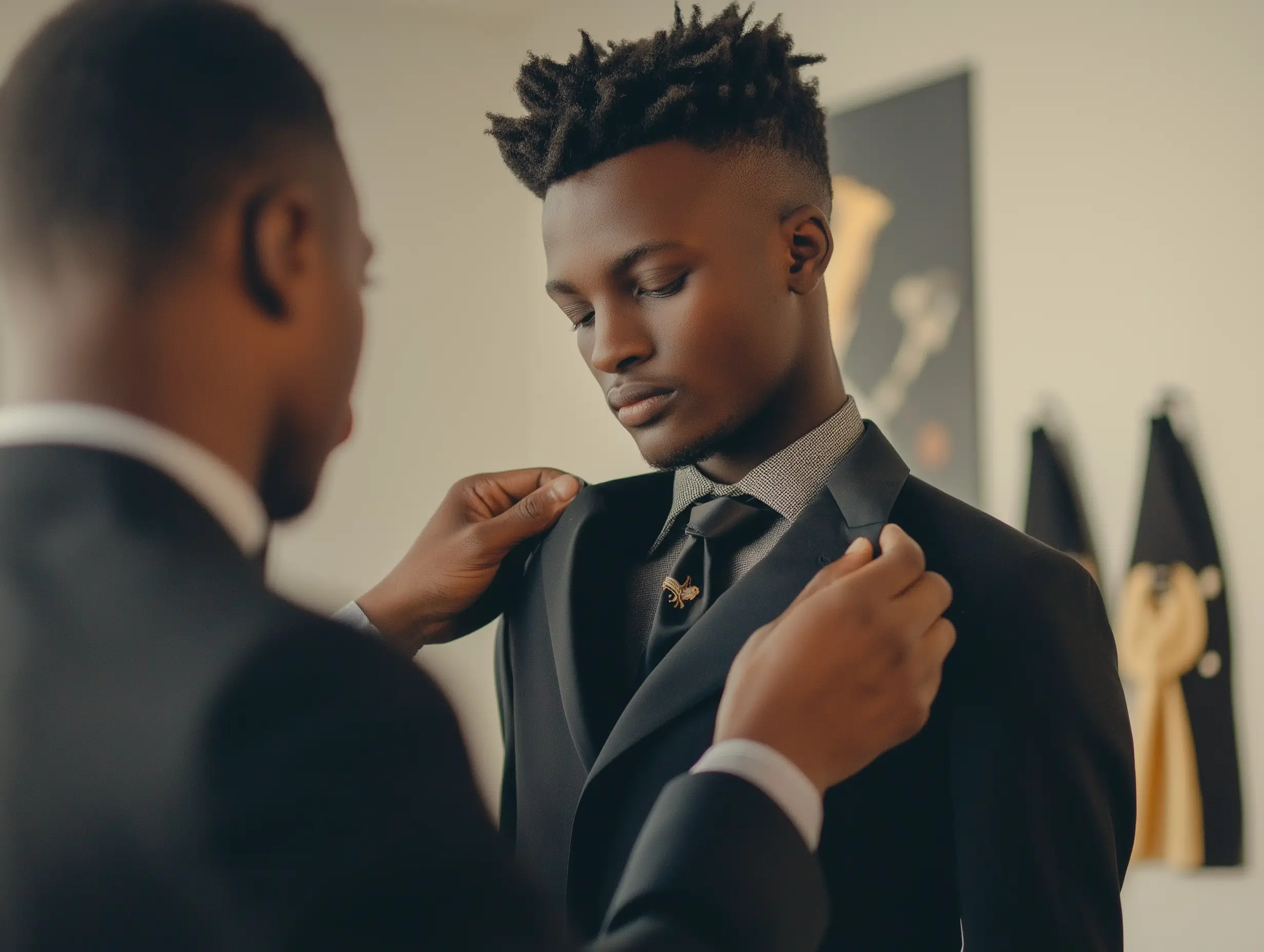
To pick the right suit size, you need to measure these seven main areas:
- Chest: Around the fullest part of your chest.
- Waist: At your natural waistline.
- Shoulders: From one shoulder edge to the other.
- Sleeves: From the shoulder seam to the wrist.
- Jacket Length: From the base of your neck to where you want the jacket to end.
- Inseam: From the crotch to the bottom of the trousers.
- Outseam: From your waist to the bottom of the trousers.
- Optional: Measure your neck for shirts, around the base of your neck.
Quick Tips:
If you wonder what is “Drop” in a suit, you might hear the term "drop" when buying a suit. It’s the difference between your jacket size and pant size, usually 6 inches. For example, if you wear a 44R jacket, your pants will typically be size 38. Read on to learn more about how this works.
Suit tailors or producers often leave an extra 1-2 inches of fabric in the pants. This allows for easy adjustments to ensure the perfect fit.
Quick Tip Using Jeans Size
If you know your jeans size, finding your suit size is simple. In the table below, "Waist" refers to your jeans size. Match your waist size and height to determine your jacket size and length.
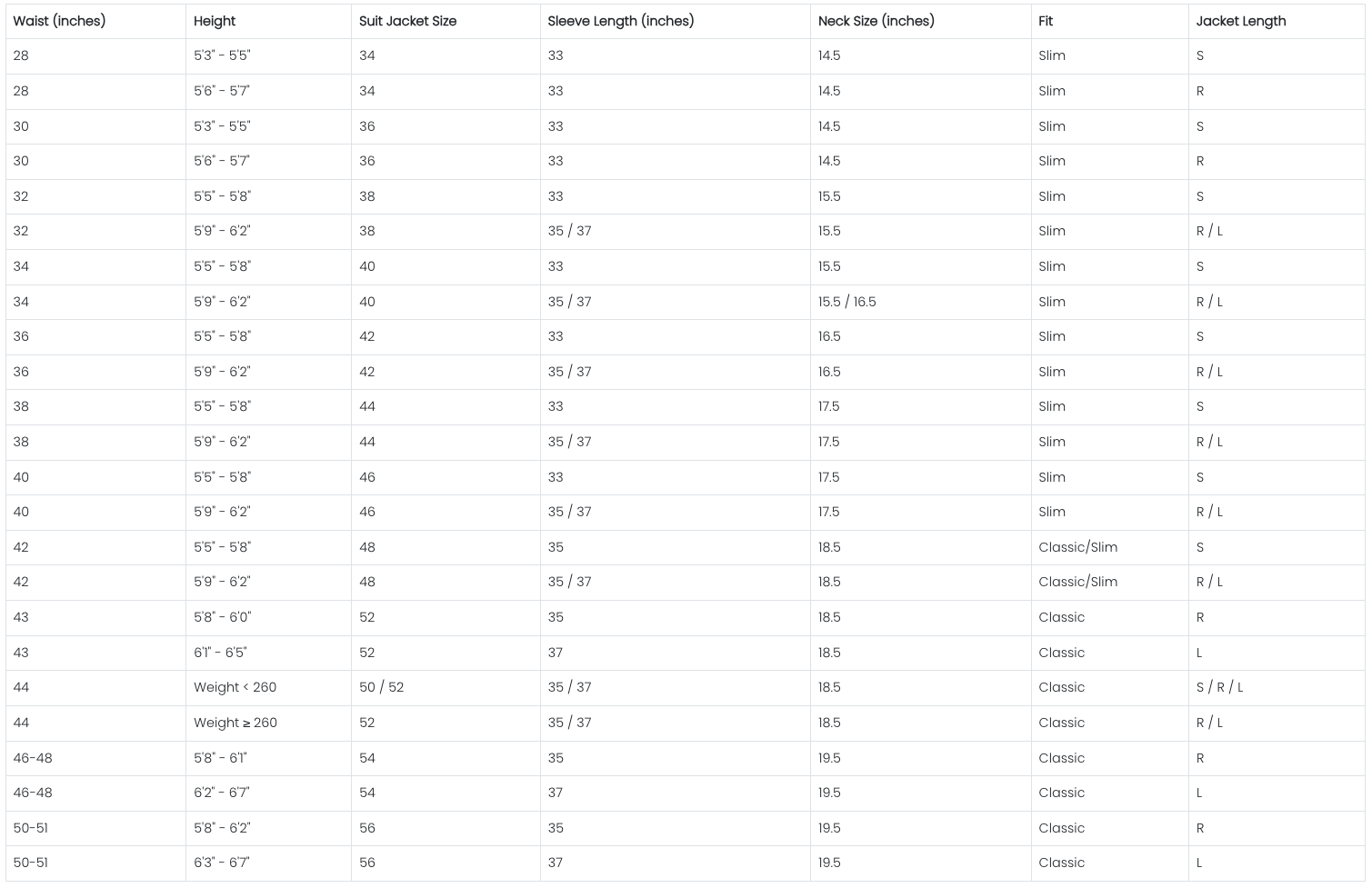
Examples:
- Waist size 38, height 5’8”: Jacket size is 44, length is Short. Your suit size is 44S or 44R. So your pant size is 38 and your drop is 6 inches.
- Waist size 46-48, height 5’9”: Jacket size is 54, length is Regular. Your suit size is 54R. So your pant size is 46 or 48 and your drop is 6 inches or 8 inches depending on your waist size.
Need Help?
Try our AI powered suit size calculator to measure your sizes easily.
Prices, Find Affordable Options
Suit prices vary based on material and brand. Polyester blends are more affordable, while wool, cashmere, or designer brands cost more. Decide your budget and choose a suit that fits both your style and price range.
Suits priced between $200 and $300 are often considered great for price-performance. Retailers like Suitcentury offer high-quality suits at even better prices because they focus on direct sales and efficient production, cutting out unnecessary costs.
Finally, now you know all the basics for it, you are all ready to get your very next, perfect suit. If you have any question or any tip simply drop us an email or visit our help center for suits and tuxedos.
Organize Event For Groups
With the top rated event creator, wedding event creator for groups! Best for wedding, prom and special events! Suit up yourself and your groomsman!
With just few easy step you can create an event, invite the members and get professional help!
How It Works Create Event Now!


Amazing guide for customers who wish to have a wonderful suits in any occassions. The inputs, variation and sizing bears it all.